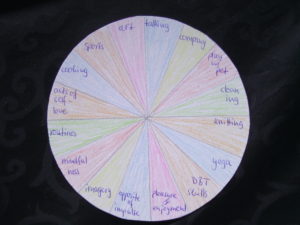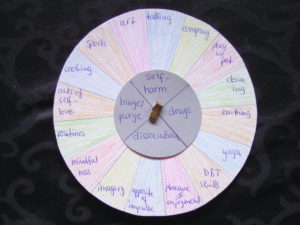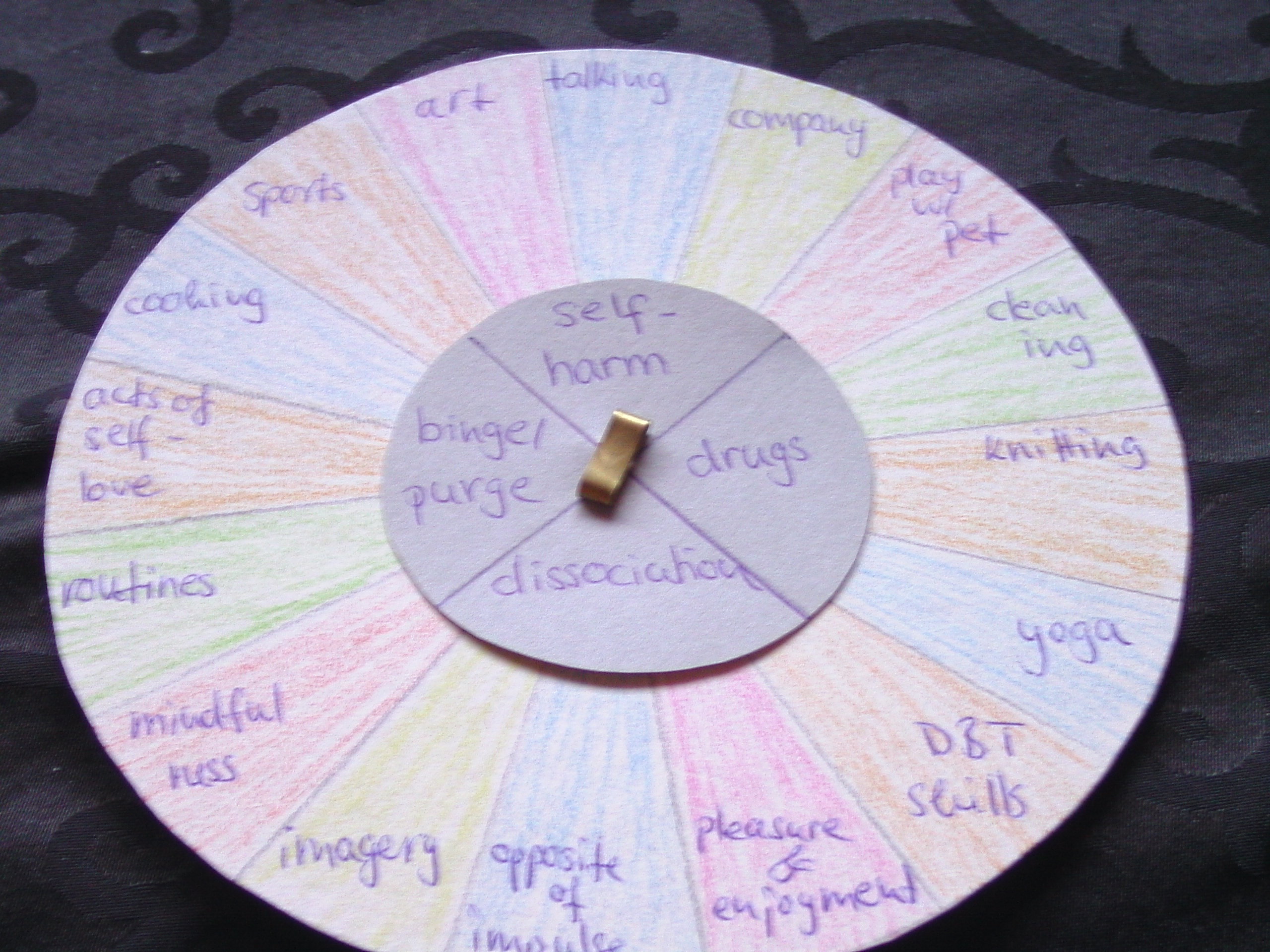When we are struggling, we try to cope. But there are healthy and there are toxic coping strategies. You will recognize toxic coping because it works short-term, but it has negative long-term effects.
Things like
- alcohol,
- drugs,
- self-harm,
- binge/purge cycles,
- abuse of prescription medication,
- shopping binges,
- high-risk behavior,
- irresponsible sexual activity,
- dissociation
- acts of violence
- ….
- ….

wheel of toxic coping
You can’t just stop using toxic coping and expect to be ok. While it harms you, it is also a way to cope with the situation and you need to cope with it somehow. If you observe yourself closely, you might notice that if you stop one toxic coping behavior, you will feel urges to get involved with another toxic strategy. Say you are helplessly angry, the first impulse could be self-harm. If you force yourself not to do that, you might feel drawn to alcohol and if you still withstand, you might feel urges to binge&purge. You are moving through the wheel of toxic coping.
Everyone uses different toxic coping strategies. Take a moment to identify yours. Recognizing them when you are stressed and feeling the urge to use them is key to stopping the cycle.
Instead of just trying to use willpower to avoid toxic coping, we need to replace it with healthy coping strategies.
They are a little frustrating, because while they don’t harm you long-term they are also not as radically effective as the toxic strategies. So you might need more than one to get sufficient results. Just remember the true cost of toxic coping. It threatens your health, your self-esteem, your finances, your relationships, your freedom and your future.
To counter the wheel of toxic coping we can create a wheel of healthy coping and self-care.
Collect the things that work for you.
That might include
- talking to someone
- being around people
- playing with your pet
(more about relational regulation)
- deep-cleaning
- knitting
- art
- sports
- cooking
(more distractions)
- doing the opposite of your impulse (e.g. some who feel like they need to destroy something find great relief in repairing something)
- small acts of self-love
- routines
- mindfulness
- imagery
- pleasure and enjoyment
- DBT skills
- yoga
- a cup of tea
- music
- going into nature
- journaling
- ….
- ….

wheel of healthy coping
Find out what works for you. Make a list with at least 16 ideas for healthy coping to replace the toxic strategies. You need a couple to choose from because not everything works in every situation. They can become your wheel of healthy coping. If one strategy is not helping enough, you can move to the next on this wheel.

wheel of coping
If this is helpful for you, you can combine the two wheels to create a little tangible tool to help you make good choices in difficult situations. You could easily see if your current urge is toxic or healthy coping. If it is toxic, you can look at the healthy strategy next to it and just try that instead.
And maybe you don’t need the toxic wheel at all and just work with the wheel of healthy coping for inspiration.
Over time and with some self-observation you will notice, that certain healthy coping strategies work best when you feel the urge for certain toxic coping. It means that you have found your ideal healthy coping strategy and you can use it right away instead of going through the wheel first. We usually tend toward binge/purge behavior when we are angry. Writing an angry letter with a lot of strong words or kickboxing have proven to be ideal coping for us. Make sure to reflect about your strategies and their helpfulness. The wheel is mainly a tool to help you during the time when you are still learning about your ideal coping. The better you know yourself the less you will need it.
It might be very difficult for you to remove toxic coping from your life all at once. You should know that it is still there, if nothing else works, a last resort. But please make sure that you have tried everything else before you turn to that. It does have a high cost.
Suicide is not a coping strategy, not even a toxic one. It ends all attempts to cope. If you are suicidal, please use your safety plan.


Leave a Reply